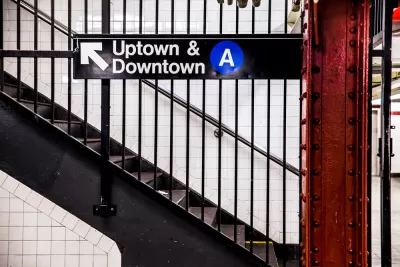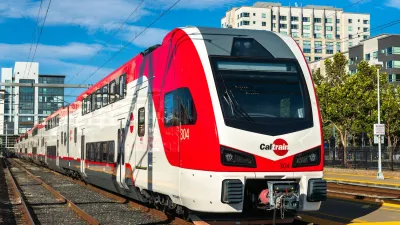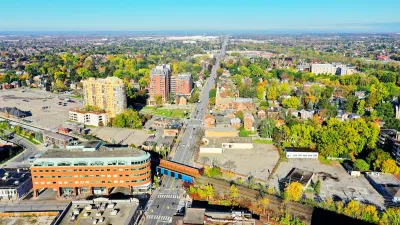A social network analysis, touted as the largest ever, reveals the importance of mobility for social connections.

"How do people meet, and maintain ties, in the big city?"
According to new research shared by Henry Grabar, in New York City, the main factor determining the answer to that question is transit time—which depends on transit lines.
"Call it the 'Take the ‘A’ Train' theory of socializing, after the Billy Strayhorn tune about the subway line that links Harlem and Bed-Stuy," writes Grabar.
The findings are from a working paper posted this month with the National Bureau of Economic Research, and led by Michael Bailey. The researchers claim they "have assembled the most comprehensive portrait to date of a city’s social network," reports Grabar.
Here, Grabar summarizes the findings of the study: "A 10 percent greater distance between two ZIP codes was associated with a decline in social connectedness of 8.7 percent. A 10 percent greater increase in cab cost was associated with a 10.6 decline in social connectedness. And a 10 percent greater public transit time is associated with 14.2 percent lower social connectedness."
FULL STORY: What Determines Your Social Network? In New York, Your Subway Line.

Alabama: Trump Terminates Settlements for Black Communities Harmed By Raw Sewage
Trump deemed the landmark civil rights agreement “illegal DEI and environmental justice policy.”

Planetizen Federal Action Tracker
A weekly monitor of how Trump’s orders and actions are impacting planners and planning in America.

Why Should We Subsidize Public Transportation?
Many public transit agencies face financial stress due to rising costs, declining fare revenue, and declining subsidies. Transit advocates must provide a strong business case for increasing public transit funding.

Understanding Road Diets
An explainer from Momentum highlights the advantages of reducing vehicle lanes in favor of more bike, transit, and pedestrian infrastructure.

New California Law Regulates Warehouse Pollution
A new law tightens building and emissions regulations for large distribution warehouses to mitigate air pollution and traffic in surrounding communities.

Phoenix Announces Opening Date for Light Rail Extension
The South Central extension will connect South Phoenix to downtown and other major hubs starting on June 7.
Urban Design for Planners 1: Software Tools
This six-course series explores essential urban design concepts using open source software and equips planners with the tools they need to participate fully in the urban design process.
Planning for Universal Design
Learn the tools for implementing Universal Design in planning regulations.
Caltrans
Smith Gee Studio
Institute for Housing and Urban Development Studies (IHS)
City of Grandview
Harvard GSD Executive Education
Toledo-Lucas County Plan Commissions
Salt Lake City
NYU Wagner Graduate School of Public Service





























